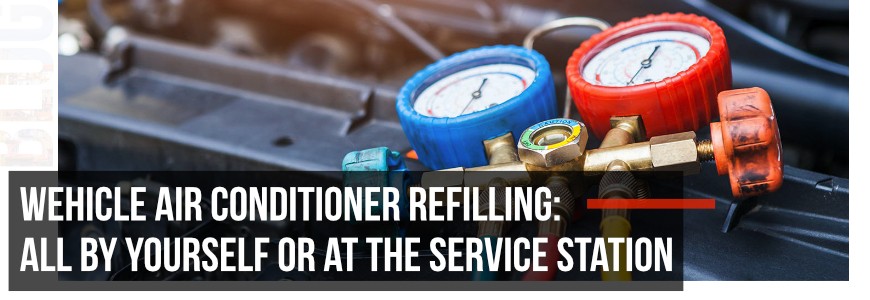
An air conditioner requires proper use and servicing as much as any other part of a vehicle. Freon, most often R134a or R1234yf, is used as a refrigerant in vehicle AC systems. While in operation, the air conditioner will be leaking unavoidably. An average wasted amount of a refrigerant within a year comes up to about 10-15%, which is the norm. To recover the refrigerant capacity, it will be enough to refill the air conditioner once in three years. If the car is old, the air conditioner must be refilled more often: once in two years. The refilling procedure (servicing) is the same for all the air conditioners and includes the following steps: system tightness testing, refrigerant evacuation, system pumping and refilling, performance testing.
Today there are a lot of “do-it-yourself” articles and videos advising on how to refill an air conditioner. Special equipment and tools necessary for the procedure are always available for sale.
MSG Equipment specializes in the development, engineering, and update of the equipment for diagnostics of vehicle air conditioners, such as MS111 Test bench for AC compressors, and MS101P Flushing stand for AC systems.
The experience gained during the years of practice allows us to say that the independent refilling or repair of air conditioners often leads to serious breakdowns.
Let's give a few reasons why air conditioners should be serviced by specialists.
First step: System tightness test. Special tools are required to perform the test. By skipping this step, you take the risk of charging an unpressurized system. This is the same as inflating the punctured tire which is going to deflate a couple of miles away or less. As a result, a shortage of the refrigerant and oil along with the unavoidable presence of the infiltrating moist air in the operating air conditioner will lead to a total breakdown of a compressor, thermostatic expansion valve, and condenser. Consequently, the costly repair is inevitable.
Second step: Refrigerant evacuation. The refrigerant should be completely evacuated from the AC system; the oil will be partially removed as well. This procedure requires special recovery equipment to remove the refrigerant and determine the exact amounts of the refrigerant and oil collected – this will help to charge the air conditioner with the same amount of the new agents. Please bear in mind that balance is very important when it comes to air conditioners and other refrigerating appliances. For example, an insufficient amount of oil will lead to oil starvation of the compressor and its subsequent damage, while the excess of oil worsens the heat exchange in the condenser and evaporator and results in the improper work of the air conditioner. This is exactly the case when “Never too much of a good thing” doesn’t work.
Third step: Pumping. Air and moisture should be removed from the air conditioning system. Air and water if remained, mix with the oil and refrigerant forming an acid that ruins the system from the inside. You won’t be able to charge the system with the necessary amount of the refrigerant without its prior dehydration with a vacuum pump. The insufficient amount of a refrigerant in the system, as well as non-exhausted moisture and air, will cause the system failure any time soon.
Last step: System refilling. There are some pitfalls there too, the most common of which is a huge amount of fake cheap Freon in the market. If you are unlucky to charge your air conditioner with a low-quality Freon, the consequences will be the same: poor AC performance, failure, costly repair.
Here we have given you a general idea about the refilling of a vehicle air conditioner and things that may happen if you fail to perform the procedure as required. Now you can tell if you are able to refill your air conditioner by yourself or not. All the necessary equipment and tools at hand would probably make it possible. If you are not yet convinced – ignore the reasons and go ahead! This is a good way to keep our clients busy.



COMMENTS